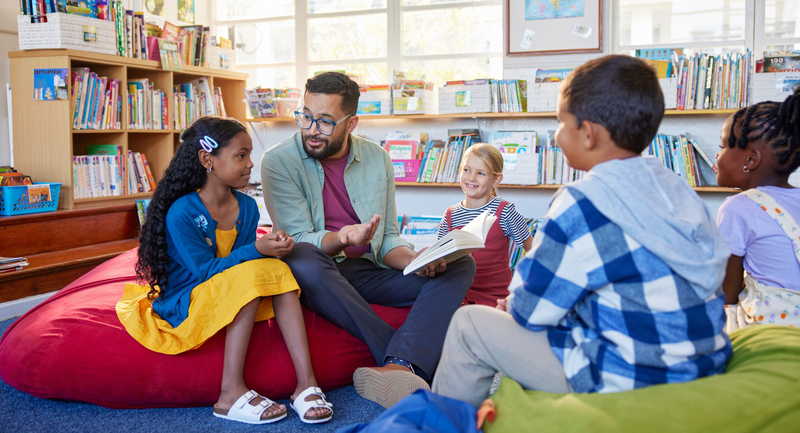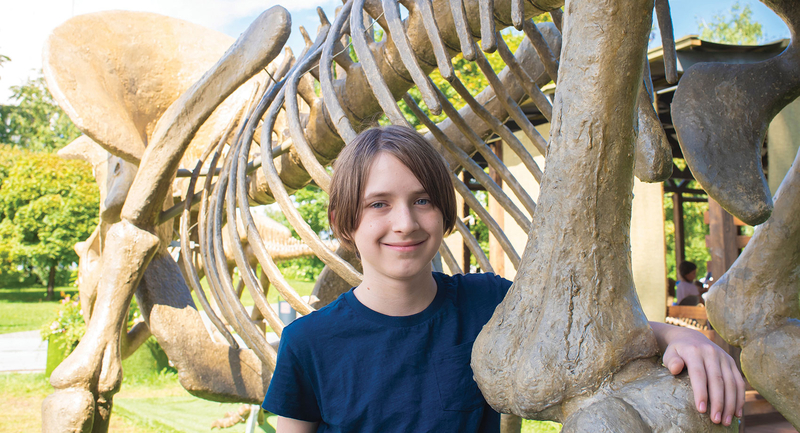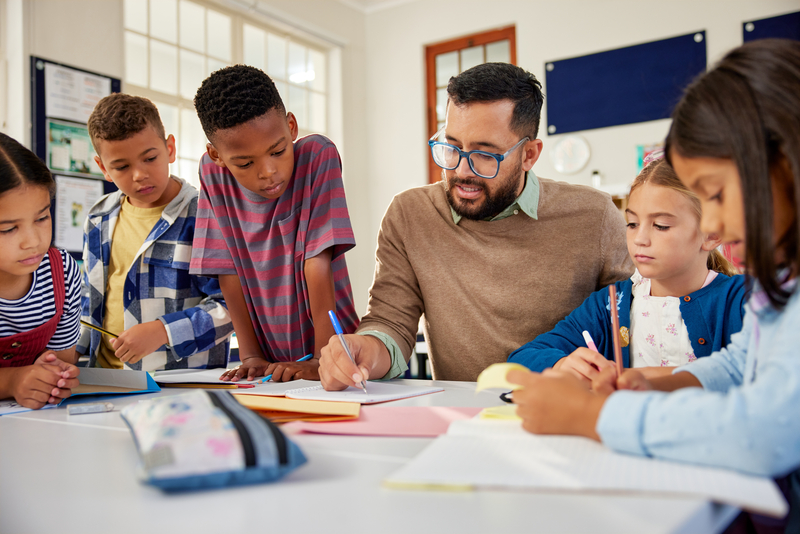The life force of teaching practice is thinking and wondering. We carry home those moments of the day that touch us, and we question decisions made. During these times of reflection, we realize when something needs to change.
A protocol, or guide, enables teachers to refine the process of reflection, alone or with colleagues. The Guided Reflection Protocol is useful for teachers who choose to reflect alone. The Critical Incidents Protocol, which we developed through our work with the Annenberg Institute for School Reform at Brown University, is used for shared reflection. The steps for each protocol are similar; both include writing.
Guided Reflection Protocol
The first step in guided reflection is to collect possible episodes for reflection. In his book Critical Incidents in Teaching: Developing Professional Judgement (1993), David Tripp encourages us to think about ordinary events, which often have much to tell us about the underlying trends, motives, and structures of our practice. Simon's story, "The Geese and the Blinds," exemplifies this use of an ordinary event.
Step One: What Happened?
Wednesday, September 24, 9:30 a.m. I stand to one side of the classroom, taking the morning attendance. One student glances out the window and sees a dozen Canada geese grazing on the playground. Hopping from his seat, he calls out as he heads to the window for a better view. Within moments, six students cluster around the window. Others start from their seats to join them. I call for attention and ask them to return to their desks. When none of the students respond, I walk to the window and lower the blinds.
Answering the question What happened? is more difficult than it sounds. We all have a tendency to jump into an interpretive or a judgmental mode, but it is important to begin by simply telling the story. Writing down what happened—without analysis or judgment—aids in creating a brief narrative. Only then are we ready to move to the second step.
Step Two: Why Did It Happen?
Attempting to understand why an event happened the way it did is the beginning of reflection. We must search the context within which the event occurred for explanations. Simon reflects: It's not hard to imagine why the students reacted to the geese as they did. As 9-year-olds, they are incredibly curious about their world. Explaining my reaction is more difficult. Even as I was lowering the blinds, I was kicking myself. Here was a natural opportunity to explore the students' interests. Had I stood at the window with them for five minutes, asking questions to see what they knew about geese, or even just listening to them, I'd be telling a story about seizing the moment or taking advantage of a learning opportunity. I knew that even as I lowered the blinds. So, why?
Searching deeper, we may find that a specific event serves as an example of a more general category of events. We need to consider the underlying structures within the school that may be a part of the event and examine deeply held values. As we search, we often find more questions than answers. Two key things stand out concerning that morning. First, the schedule. On Wednesdays, students leave the room at 10:00 a.m. and do not return until 15 minutes before lunch. I would be out of the classroom all afternoon attending a meeting, and so this half hour was all the time I would have with my students.Second, this is the most challenging class I've had in 22 years of teaching. The first three weeks of school had been a constant struggle as I tried strategy after strategy to hold their attention long enough to have a discussion, give directions, or conduct a lesson. The hectic schedule and the need to prepare the class for a substitute added to the difficulty I've had "controlling" the class, so I closed the blinds.
There's something satisfying about answering the question Why did it happen? Reflection often stops here. If the goal is to become a reflective practitioner, however, we need to look more deeply. The search for meaning is step three.
Step Three: What Might It Mean?
Assigning meaning to the ordinary episodes that make up our days can feel like overkill. Is there really meaning behind all those events? Wouldn't it be more productive to wait for something extraordinary to happen, an event marked with a sign: "Pay attention! Something important is happening." Guided reflection is a way to find the meaning within the mundane. Split-second decision making is a crucial aspect of teaching. Given the daily madness of life in a classroom, considering all the options and consequences is difficult. Often, it is only through reflection that we even recognize that we had a choice, that we could have done something differently. Like a football quarterback, I often make bad decisions because of pressure. Unlike a quarterback, I don't have an offensive line to blame for letting the pressure get to me. While it would be nice to believe that I could somehow make the pressure go away, the fact is that it will always be with me. Being a teacher means learning to live within that pressure, learning from the decisions I make and learning to make better decisions.
Our growing awareness of how all events carry some meaning is not a new concept. In Experience and Education (1938), John Dewey wrote about experience and its relationship to learning and teaching: "Every experience affects for better or worse the attitudes which help decide the quality of further experiences" (p. 37). He believed that teachers must be aware of the "possibilities inherent in ordinary experience" (p. 89), that the "business of the educator [is] to see in what direction an experience is heading" (p. 38). Rediscovering this concept through the examination of ordinary events creates a fresh awareness of its meaning.
The search for meaning is an integral part of being human. But understanding by itself doesn't create changes in classroom practice. The last phase of guided reflection is more action oriented and involves holding our practice to the light of those new understandings.
Step Four: What Are the Implications for My Practice?
Simon continues: My reaction to the pressure this year has been to resort to methods of control. I seem to be forever pulling down the blinds. I'm thinking about how I might better deal with the pressure.But there is something else that needs attention. Where is the pressure coming from? I'm sensing from administration and parents that they feel I should be doing things differently. I've gotten subtle and overt messages that I need to pay more attention to "covering" the curriculum, that I should be finding a more equal balance between process and product.Maybe they're right. What I've been doing hasn't exactly been a spectacular success. But I think that what is causing the lowering of the blinds stems from my not trusting enough in the process. Controlling the class in a fairly traditional sense isn't going to work in the long run. Establishing a process that allows the class to control itself will help keep the blinds up.
Cultivating deep reflection through the use of a guiding protocol is an entry into rethinking and changing practice. Alone, each of us can proceed step-by-step through the examination of a particular event. Through the process, we gain new insights into the implications of ordinary events, as Simon did when he analyzed "The Geese and the Blinds."
Whereas Guided Reflection is for use by individuals, the Critical Incidents Protocol is used with colleagues. The goal is the same: to get to the heart of our practice, the place that pumps the lifeblood into our teaching, where we reflect, gain insight, and change what we do with our students. In addition, the Critical Incidents Protocol encourages the establishment of collegial relationships.
Guided Reflection Protocol (For Individual Reflection)
- Collect stories. Some educators find that keeping a set of index cards or a steno book close at hand provides a way to jot down stories as they occur. Others prefer to wait until the end of the day and write in a journal.
- What happened? Choose a story that strikes you as particularly interesting. Write it succinctly.
- Why did it happen? Fill in enough of the context to give the story meaning. Answer the question in a way that makes sense to you.
- What might it mean? Recognizing that there is no one answer is an important step. Explore possible meanings rather than determine the meaning.
- What are the implications for practice? Consider how your practice might change given any new understandings that have emerged from the earlier steps.
Critical Incidents Protocol
Schools are social places. Although too often educators think and act alone, in most schools colleagues do share daily events. Stories told in teachers' lounges are a potential source of rich insight into issues of teaching and learning and can open doors to professional dialogue.
Telling stories has the potential for changing individual practice and the culture of our schools. The Critical Incidents Protocol allows practitioners to share stories in a way that is useful to their own thinking and to that of the group.
Three to five colleagues meet for the purpose of exploring a "critical incident." For 10 minutes, all write a brief account of an incident. Participants should know that the sharing of their writing will be for the purpose of getting feedback on what happened rather than on the quality of the writing itself.
Next, the group decides which story to use with the protocol. The presenter for the session then reads the story while the group listens carefully to understand the incident and the context. Colleagues ask clarifying questions about what happened or why the incident occurred, then they discuss what the incident might mean in terms of the presenter's practice. During this time, the presenter listens and takes notes. The presenter then responds, and the participants discuss the implications for their own practice. To conclude, one member leads a conversation about what happened during the session, how well the process worked, and how the group might change the process.
The sharing of individual stories raises issues in the fresh air of collegial support. If open dialogue is not already part of a school's culture, however, colleagues may feel insecure about beginning. To gain confidence, they may choose to run through the protocol first with a story that is not theirs. For this purpose, Grace offers a story about an incident in the writing lab from her practice as a high school English teacher.
Step One: What Happened?
We went into the computer lab to work on essay drafts. TJ, Neptune, Ronny, and Mick sat as a foursome. Their sitting together had not worked last time. On their single printer an obscene message had appeared. All four had denied writing it.The next day Ronny, Neptune, and Mick had already sat together. Just as TJ was about to take his seat, I asked him if he would mind sitting over at the next bay of computers. He exploded. "You think I'm the cause of the problem, don't you?"Actually I did think he might be, but I wasn't at all certain. "No," I said,"but I do want you to sit over here for today." He got red in the face, plunked down in the chair near the three other boys, and refused to move.I motioned for him to come with me. Out in the hall, I said to him quietly,"The bottom line is that all of you need to get your work done." Out of control, body shaking, TJ angrily spewed out, "You always pick on me. Those guys. . . . You. . . ." I could hardly hear his words, so fascinated was I with his intense emotion and his whole-body animation.Contrary to my ordinary response to students who yell, I felt perfectly calm. I knew I needed to wait. Out of the corner of my eye, I saw two male teachers rise out of their chairs in the hallway about 25 feet away. They obviously thought that I, a woman of small stature, needed protection. But I did not look at them. I looked at TJ and waited.When he had expended his wrathful energy, I said softly, "You know, TJ, you are a natural-born leader." I waited. Breathed in and out. "You did not choose to be a leader; it was thrust upon you. But there you are. People follow you. So you have a tremendous responsibility, to lead in a positive and productive way. Do you understand what I am saying?"Like an exhalation after a long in- breath, his body visibly relaxed. He looked down at me and nodded his head. Then he held out his hand to me and said, "I'm sorry."Back in the room, he picked up his stuff and, without a word, moved to the next bay of computers.
Step Two: Using the Critical Incidents Protocol
At first you'll think that you need more information than this, but we think that you have enough here. One member of the group will take the role of Grace. Your "Grace" can answer clarifying questions about what happened or why it happened in whatever way he or she sees fit. Work through the protocol to figure out what the incident might mean in terms of "Grace's" practice. Finally, discuss what implications the incident in the writing lab might have for her practice and for your own as reflective educators. Then, try an event of your own.
We think that you will find that whether the group uses your story or someone else's, building reflective practice together is a sure way to get to the heart of teaching and learning.
Critical Incidents Protocol (For Shared Reflection)
- Write stories. Each group member writes briefly in response to the question: What happened? (10 minutes)
- Choose a story. The group decides which story to use. (5 minutes)
- What happened? The presenter reads the written account of what happened and sets it within the context of professional goals. (10 minutes)
- Why did it happen? Colleagues ask clarifying questions. (5 minutes)
- What might it mean? The group raises questions about the incident in the context of the presenter's work. They discuss it as professional, caring, colleagues while the presenter listens. (15 minutes)
- What are the implications for practice? The presenter responds, then the group engages in conversation about the implications for the presenter's practice and for the participants' own practice. A useful question at this stage might be, What new insights occurred? (15 minutes)
- Debrief the practice. The group talks about what just happened. How did the process work? (10 minutes)







